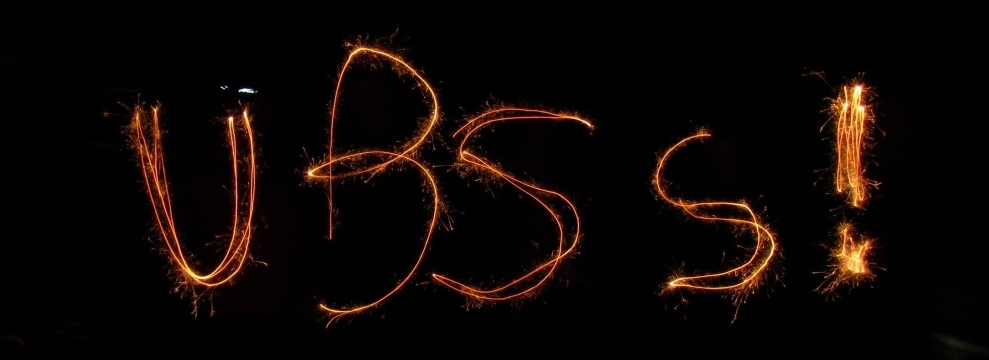|
Welcome
to our August monthly newsletter! It's been a busy summer both for
caving and for work in the museum. I've spent a total of six working
days supervising student researchers from a variety of institutions, and
members of the society have been caving both at home and abroad. Please
keep contributions coming! They can be as short or long as you like, so
if you have anything for future newsletters, please let me know. And don't forget to send us some Memories for the 100 Memories project.
Back issues of this newsletter can be found here.
Linda Wilson
|
|
TRIP REPORT - TRAPDOOR POT
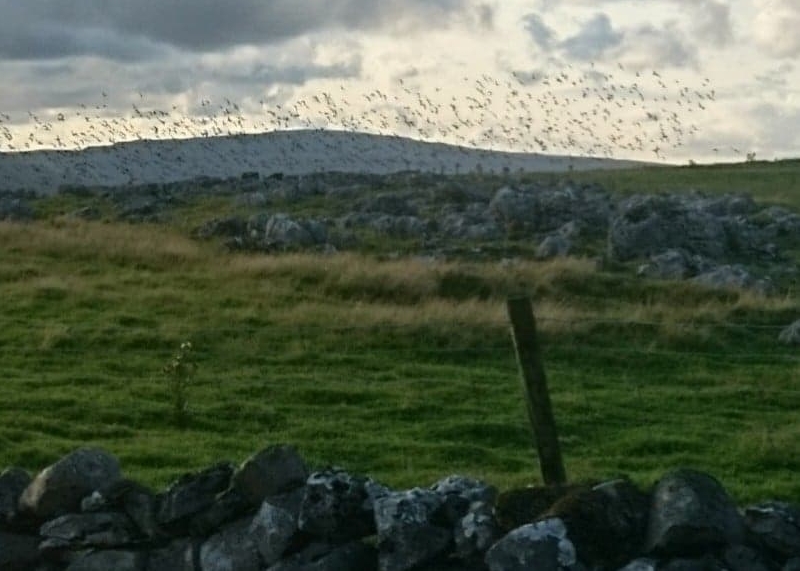
An evening murmuration over Pen y Ghent (because everyone forgot to take cameras underground!). Photo by Elaine Oliver.
Summer is generally a good time for
caving in the Yorkshire Dales, but even so, there's always a risk of
downpours, and then it's necessary to improvise. Hon Sec Henry Morgan
tells the story of one lesser known trip, deemed a good cave for a wet
day!
After an excellent, but very wet trip down Bar Pot the previous day,
Haydon, Elaine and myself set about finding an interesting trip in
Yorkshire that might be accessible in such soggy conditions.
The list was not a long one, and we settled on Trapdoor Pot as our destination for the next day.
Having parked at Cold Cotes, we found the small track leading up to the
cave at the second attempt (the “faint path” mentioned in the
description displayed characteristics remarkably similar to Land Rover
tracks…). Elaine managed to find the entrance after five minutes of
walking around, and Haydon was soon rigging the 5m entrance pitch.
This was fairly straightforward and we wriggled on to discover how Foam
Pitch got its name. This we free climbed (4m), then Haydon expressed
uncertainty about the way on and asked whether there was a higher level
route. However, he had indeed located the Ripper squeeze. Elaine popped
through and I then followed, but after several attempts with
increasingly fewer items of clothing Haydon deemed himself too large for
this obstacle, and so after Elaine and I dropped the next pitch (15m)
and had a quick look at the (very unstable looking) FTSE choke, we
returned back to the surface.
Given the recent astronomical amounts of rain, we decided to poke our
heads into Valley Entrance to see how things were looking. Although
there was plenty of space through the duck, later passages that usually
take only a small trickle were waist deep, and upon reaching the pitch,
there was foam almost level with the pitch head although the water was
now much lower - clearly the break in the weather that day had allowed
water levels to fall substantially.
I decided to send my Haribo for a swim to Keld Head, then we returned
back to the BPC via a beer stop in the Marton Arms and spent the evening
watching the Perseids meteor shower from the top of Pen y Ghent.
Henry Morgan
|
|
YORKSHIRE NEWS - ONLINE BOOKING SYSTEM FOR CAVES ON LECK FELL GOES
LIVE
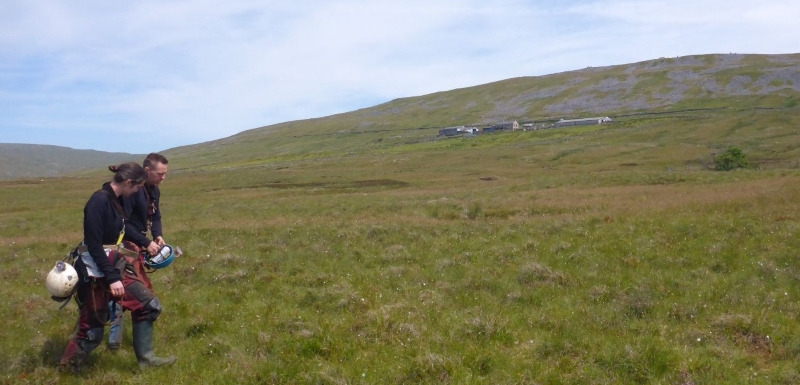
Leck Fell. Photo courtesy of CNCC.
In other news from the Dales, there's now a new online booking system for the caves on Leck Fell.
CNCC secretary Matt Ewles has stated: "The historic permit system for
the caves on Leck Fell, which was discontinued a few months ago, has now
been replaced by the online booking system. This system, in use for the
caves of Ingleborough Estate since November, now also allows
landowner-consented access to Leck Fell caves to be booked with minimal
fuss with no closed season and no restrictions about who can gain access
for recreational caving. It is a consensual solution that the CNCC has
developed to please cavers and the landowner alike. Full details can be
found on the Council of Northern Caving Club's website."
|
|
RESCON IS COMING TO PRIDDY!
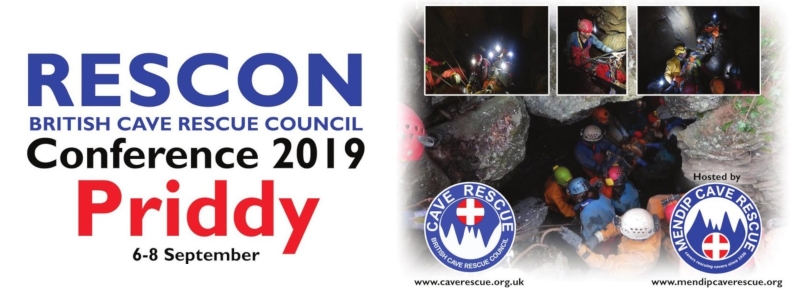
The 2019 British Cave Rescue Conference will be hosted by Mendip Cave Rescue at Priddy on the 6th - 8th September.
This event,
a regular, biennial, one in the caving calendar, is being held on
Mendip at Ebborways Farm, Pelting Road, Priddy, BA5 3BA. Participants in
the gathering of British cave rescue volunteers (and others with an
interest in caving and cave rescue techniques and equipment) will have
the opportunity to attend lectures on rescue techniques as well as join
in surface and underground practical workshops including specialist
techniques such as cave diving (for divers and non-divers), vertical
hauling and gas monitoring. Saturday night will include a bar, hog roast
and music.
The cost to students of a ticket for the event is £40. To help UBSS
students to attend, the Oliver Lloyd Memorial Fund is happy to provide a
subsidy of £20 per student. Please contact Linda Wilson if you would like to take advantage of this offer.
|
|
TRAVELS BENEATH THE EARTH - CELEBRATING THE UBSS CENTENARY
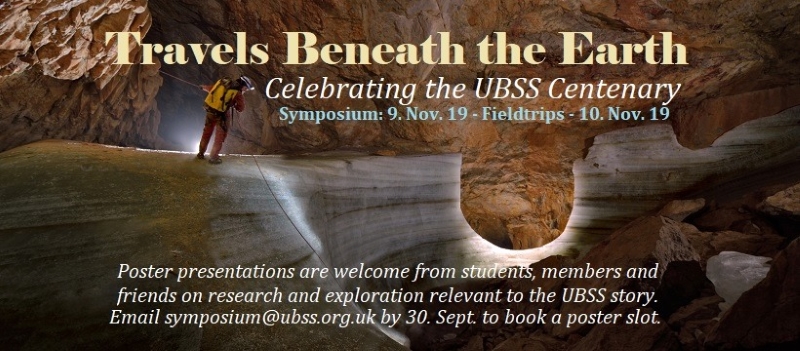
Arrangements for the symposium are
coming along well. The line up of speakers has been finalised, and we're
now hoping to encourage as many poster presentations as possible. There
will be a prize of £50 for the best poster submitted by a current
student so get your thinking caps on!
There will be a range of field trips to choose from on Sunday 10th November, so keep an eye on our website for further details.
|
|
EXPEDITION REPORT - UBSS IN MEGHALAYA
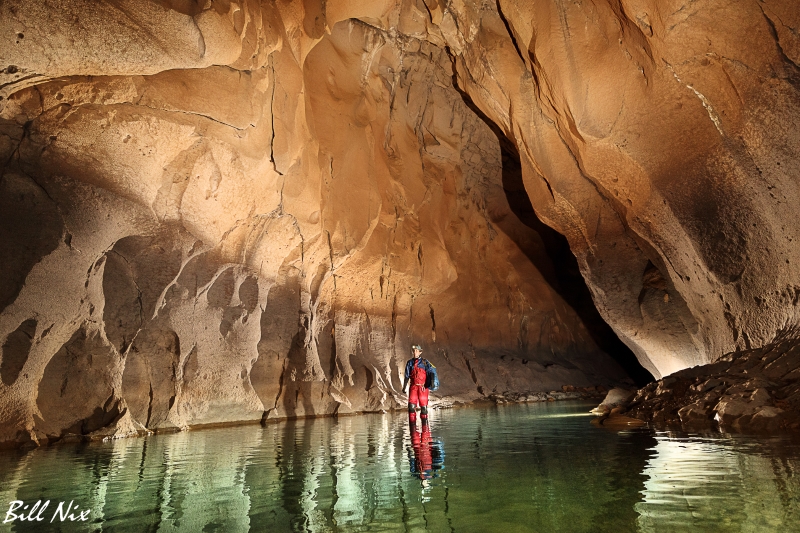
Retdung, Meghalaya. Photo courtesy of Bill Nix.
Mark Tringham gives a account of the long-running expeditions to the "abode of the clouds",
Members of UBSS have been taking part in the annual Meghalaya expedition
for quite a few years, ranging from old timers like Tony Boycott and
myself through to younger members such as Hellie Adams, Cat Henry and
Anya Keatley (who joined the expedition for the first time this year).
The expedition is multi-national with over 20 foreigners working
alongside a handful of Indian cavers. It has run annually over the last
27 years for three or four weeks each February during the middle of the
dry season.
From my own involvement which started in 2007 I quickly determined that
there were a lot of geological and speleogenesis puzzles to solve and
I've been fortunate to contribute on these aspects alongside the
sporting and technical challenges of new cave exploration, surveying and
photography. The expedition normally has an annual ‘haul’ of between 12
and 25km of new cave passages explored and surveyed and 2019 was no
exception.
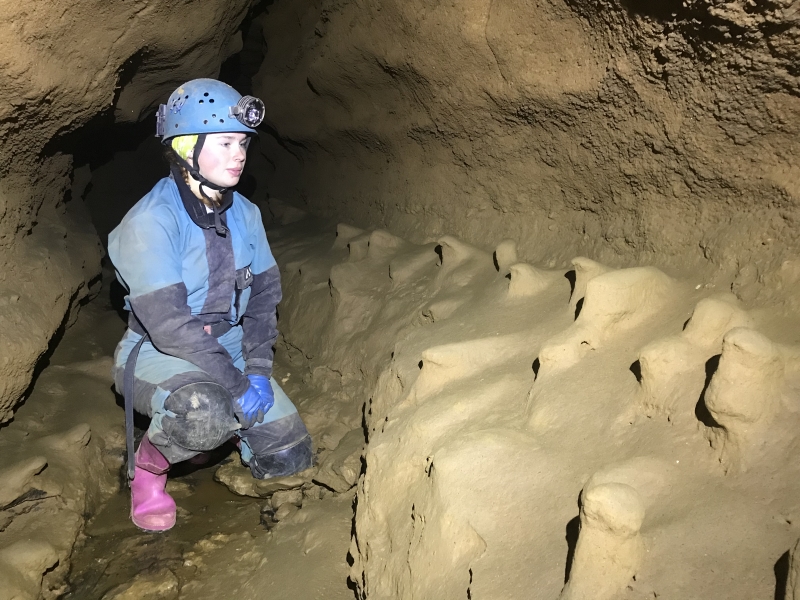
Anya Keatley in Krem Puri with 'sandmen' formations, Photo by Mark Tringham.
This year Anya, myself and three others
spent the first week putting the finishing touches to Krem Puri (Krem
means cave in the local Khasi language), the world's longest cave formed
in sandstone, adding a hard-won 387m of new passage length and taking
the cave to just over 25km in total. The cave has formed in Cretaceous
aged siliceous sandstones with a dense 2D maze that nucleated around a
very unusual 1 to 2m thick calcarenite bed and then carved deep vadose
canyon passages into the layers below and also expanded upwards by
‘stoping’ collapse to create many large meandering canyons many metres
wide and up to around 20m deep. The unusual aspects to the calcarenite
bed are that besides shelly calcareous grains it contains ‘floating’
cobbles and boulders of quartzite, granite and sandstone along with many
disarticulated fossil vertebrae probably from dinosaurs or marine
reptiles such as mosasaurs.
Highlights this year included the best looking vertebra found to date
and some acrobatic maypoling on a much too flexible 6m bamboo pole! Much
scientific work remains to be done in this cave on geology and
speleogenesis as well as trying to understand the origin of some
apparently unique sand speleothems ‘sandmen’ resembling small
stalagmites up to around 15cm tall.
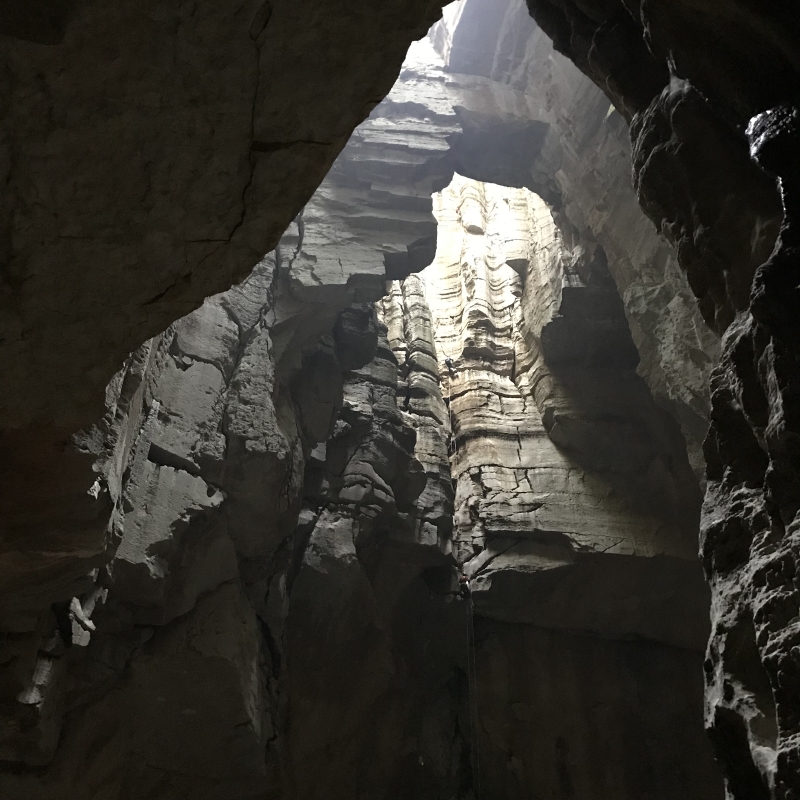
Krem Shieh entrance pitch. Photo by Mark Tringham.
The second week this year included a
sub-team doing further exploration and surveying in Krem Shieh Tangnub
which I coordinated. This cave is formed in the Eocene aged Prang
Limestone, the main cave bearing limestone in the region. It had
remained untouched since initial exploration totalling 8.7Km in
the year 2000, mostly because of the daunting 100m deep vertical to
overhanging entrance pitch and its location a bit too far away from the
core exploration area on the Shnongrim Ridge which was yielding ‘easier
pickings’ over many of the intervening years. This year we were able to
add a further 1.1Km of new passage, take some good photos of this fine
cave for the first time and check/resurvey more than 2Km of passage
where the 2000 work had obvious problems. This has allowed the old
survey data to be drawn up for the first time and the cave to be
properly understood at last. After a week of effort most but not all of
the question marks left from 2000 were resolved and scientific
observations made on cave biology, geology and speleogenesis.
For the final eight days the expedition was involved with exploring a
new cave Retdung Khur, also in the Prang Limestone and I was fortunate
to be closely involved with this. It is a resurgence cave starting with a
300m long maze-like sporty series of passages which suddenly emerged
into a massive ‘collector’ river passage generally 5 to 10m wide and 8
to 15m high, richly decorated with speleothems in the initial part. The
expedition generally had two teams in this cave each day and 4.3Km was
surveyed in total including 1.4Km going upstream in the main collector
passage before time ran out. Several as yet unexplored inlet
side-passages were noted as well as some massive high level bouldery
passages only partly explored as yet. The streamway had a lot of large
white blind fish resembling others seen in smaller pools in another cave
called Krem Um Ladaw about 2Km away which Anya and others were
exploring. Because of the shared fish fauna, the mapped course of the
caves and the geological dip it seems likely that that the 2 caves
streamways will join albeit via a sumped connection. It has been
determined from study at Um Ladaw that the fish exceed 40cm in length
and smash the record for the biggest cave fish in the world.
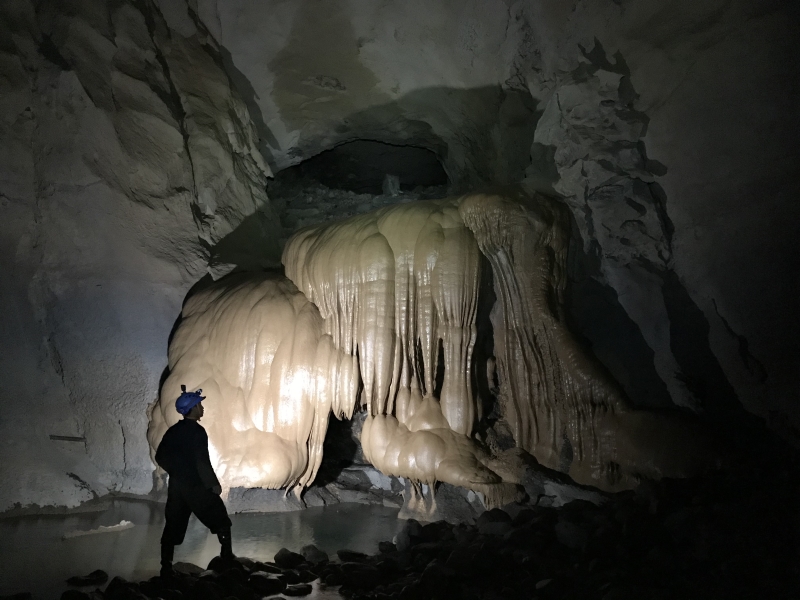
Retdung, unexplored inlet. Photo by Mark Tringham.
In conclusion the region being explored is
large and even after more than 20 years the expedition shows no sign of
running out of new caves to explore which are of major size and of great
scientific interest. Because the expedition has never sought funding
from for example the RGS or Ghar Parau Foundation it has generally
assumed a lower profile among UK cavers than other glamorous expedition
regions such as Mulu or China. However now with over 500Km of surveyed
caves including India's longest and deepest and the world records held
on sandstone cave length, the biggest by far cave fish and not to
mention two new bat species, the region will likely continue to be a
popular expedition target from both a sporting and scientific point of
view for many years to come.
Mark Tringham
|
|
100 MEMORIES - FREE-DIVING IN SWILDON'S HOLE
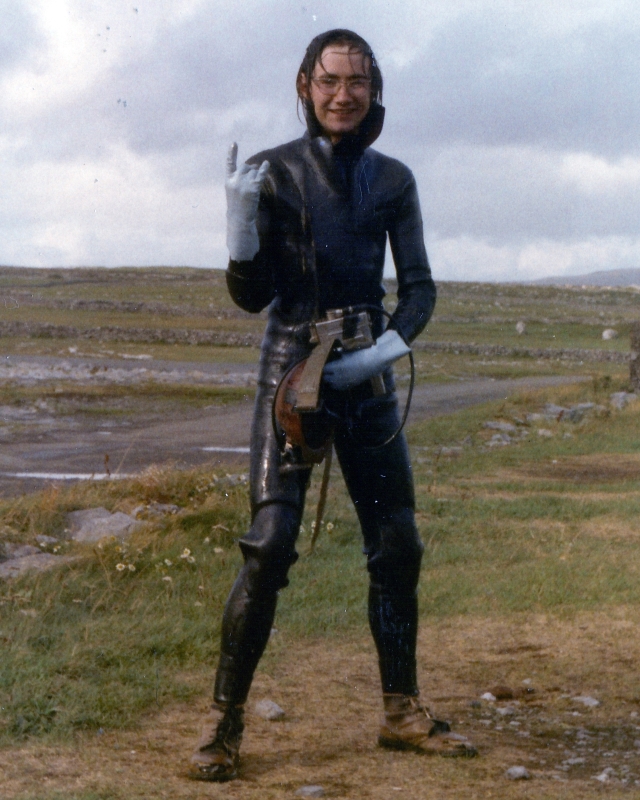
Graham as a thin man in a wetsuit (in Ireland, not Somerset!). Photo courtesy of Steve Warr.
Prompted by Elaine's account of
free-diving in the April newsletter, Graham Mullan looks back at his own
exploits when he was both younger and thinner...
I owned a wetsuit before coming to Bristol.
I had dived Swildon’s Sump One while still with the scouts and dived it
again on my first trip with UBSS, being led to Sump One by Lloyd who
was happy to wait with the rest of the party while I went through and
back.
I was keen to go further though and the chance came a few weeks later in
the company of Aldwyn Cooper; another new-recruit like me but a
postgrad student and aspiring cave diver. Chris Smart came along too
(the UBSS member not Blitz from the BEC).
We passed Sump One, where Chris was amused by the Wookey Hole road sign,
and then the three of us arrived at Sump Two. Chris had no intention of
diving it, that was down to Aldwyn and me. I don’t recall using any
lead, I didn’t have a neoprene hood and I certainly didn’t have a mask.
All a bit basic. Aldwyn dived through and signalled, three tugs on the
rope. I was dubious, 5 tugs. Aldwyn returned and in a shower of spray
surfaced and exhaled, saying: “Piece of piss!”
He was happy to go again, so he did. Again, three tugs, this time I
followed. The sump, unlike Sump One, is long enough to know you are
under water. After a few seconds you hit the flake, but you know about
this and push under it, knowing airspace is just on the other side. I
surfaced... done it! I signalled back to Chris and then had a look
around. Great Bell is roomy and circular and was about waist-deep around
the edges, deeper in the middle. The duck through to St. John’s Bell
was short and easy, but there was virtually no standing room there, too
deep, so it was a quick look at Sump 3 and back through to Great Bell.
The return dive was easy, down under the flake, pull hard and you are
back. It’s a very roomy place, and we passed straight through without
looking for Little Bell or Bob’s Bell, off route and with no guide
lines.
And then the trip out. I didn’t have Elaine’s problems caving in a wet
suit, as that’s what we always did back then, but I was bloody cold
without a hood (this was probably early November) and remember nearly
falling off the climb out of the Water Rift.
I never did dive Sump Three but did later get as far as Nine via Blue Pencil passage and Sump Four.
Graham Mullan
|
|
100 MEMORIES - THE ORIGINAL WOMEN'S QUARTERS
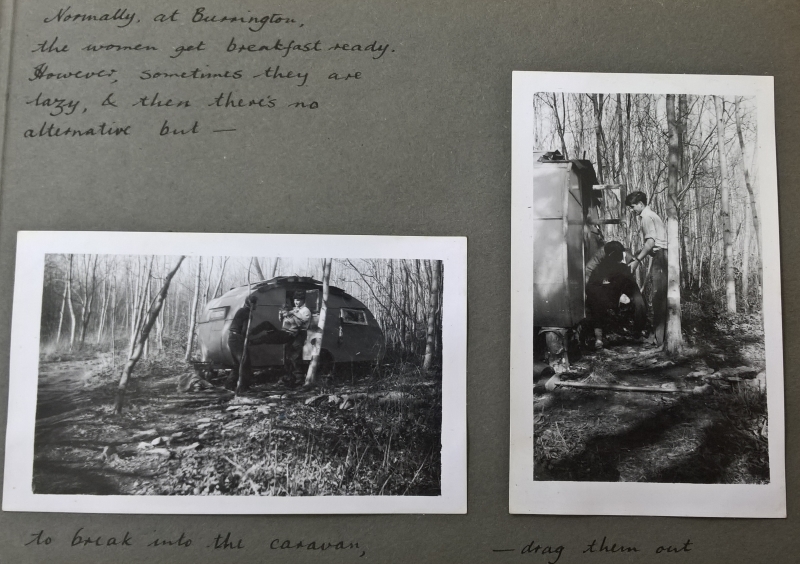
The original women's quarters at the hut. Photos from the collection of Angus Watkins.
During our visit to Angus Watkins
for his interview, he kindly let us look through his photo albums, and I
spotted the above photos of the caravan that was at one time used to
house the female members of the society at the hut. The captions to
says: "Normally, at Burrington, the women get breakfast ready.
However, sometimes they are lazy, so then there's no alternative but -
to break into the caravan, - and drag them out." Graham Mullan has dug out some details about the practice of having separate sleeping quarters for women at the hut.
The Hut was erected on New Year’s Eve in 1919. Remember that in those
days, it was a far smaller building than today. It didn’t reach its full
size until 1961 when the front was moved outwards by a couple of feet. I
believe Dave Savage was involved in that.
So there wasn’t much room inside and, of course, until the reduction of
the age of majority from 21 to 18 in 1969, almost all students were
children with the University acting in loc parentis. So attitudes were rather more strict than they are today.
So in the early days, one weekend in every five or six was women only,
when they slept in the main hut. On other weekends they stayed in local
cottages. From about 1929 they slept in bell-tents usually pitched in
the woods behind the Hut.
This situation improved in 1954 when Herbert 'Porthos' Taylor acquired a
caravan that was parked up in the woods. The ladies could then sleep in
that.
The caravan lasted until 1960 when the current separate building was
constructed. I was told that the original beds had been salvaged from a
hospital ship and were all narrow, uncomfortable things. There were six
or eight of them. There was also a hand basin, with its own water supply
collected from the roof of the building. It had no installed lighting.
The current large single bunk was installed in the late 70s, by which
time the swinging 60s had come and gone, the age of majority had reduced
to 18 and the building became generally known as “the married
quarters.” Certainly, by the early 70s women slept in the main hut as a
matter of course and the smaller building was little used until it was
refurbed, not just with the large bunk, but with effective insulation, a
small wood burner and even a gas stove and gas lighting. The latter
wasn’t much used as mantles for the ex-caravan gas lights became
impossible to come by and the gas bottle, stored in a locked cupboard
just outside the building, was soon stolen.
The ‘tradition’ of the women cooking breakfast had clearly lapsed by
then and heaven help anyone who tried to drag them out of their bunks
for that purpose!
Graham Mullan
|
|
A MAMMALIAN ASSEMBLAGE FROM RHINOCEROS HOLE, WOOKEY, SOMERSET
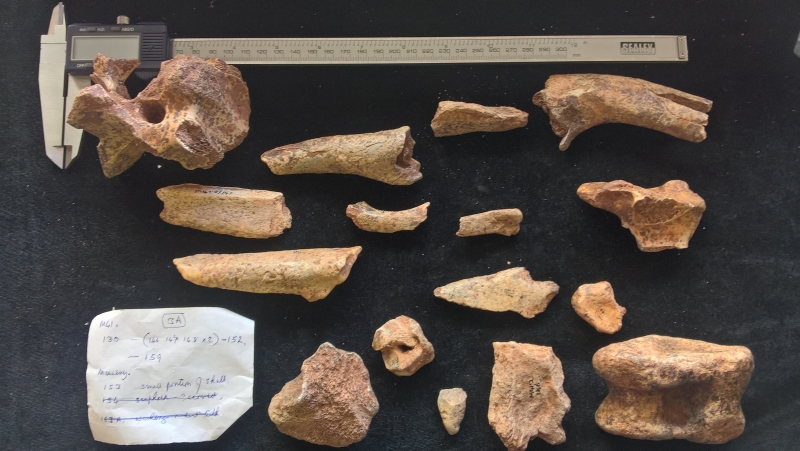
Bones from Rhinoceros Hole.
July and August have been busy ones
in the museum. I spent time working with Tim Pearson, an MSc Quaternary
Science student at Royal Holloway. Tim talks here about his
dissertation research involves investigating and reconstructing the
mammalian assemblages at Badger Hole and Rhinoceros Hole, which are
neighbouring small caves close to the large Wookey Hole cave.
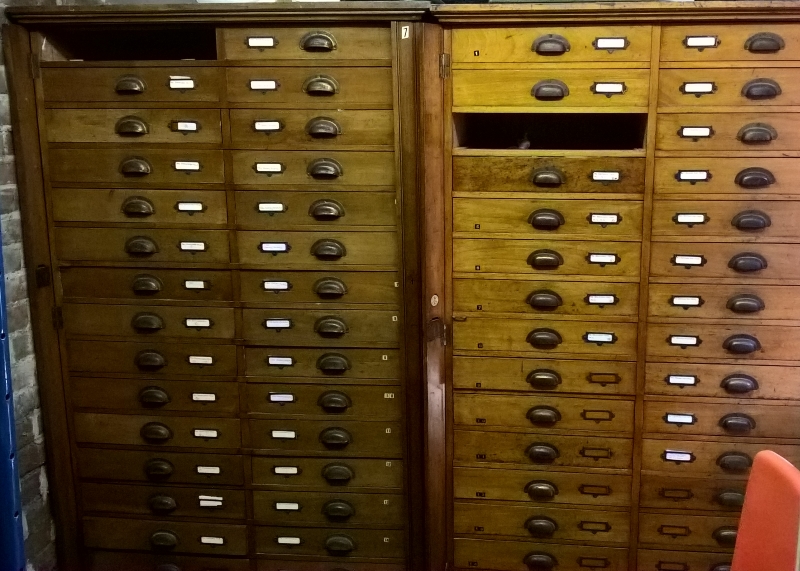
The material from Rhinoceros Hole takes up over half of this cabinet, showing the amount of work Tim had to do..
Rhinoceros Hole was excavated by EK Tratman
in the 1970s, and the material from this is stored at the UBSS Museum.
In July and August this year I spent four days examining the material,
which is stored in boxes and drawers with a small number of items on
display. I went through the specimens and the museum catalogues with a
view to gathering data on the relative abundance of the different mammal
species in the different layers uncovered by Professor Tratman’s team.
By looking at the ecological preferences of the species represented I
aim to reconstruct the story of the changing habitat in and around the
cave, and to infer changes in the climate through the period
represented. I have collated taphonomic evidence such as signs of
rolling, gnawing by predators and human modification with a view to
establishing the story of the deposition.
I have also taken measurements of certain bones and teeth e.g. wolf,
horse and red deer, which can give an indication of the size of animal
concerned. The cave contains (not surprisingly) very large numbers of
Rhinoceros specimens, mostly woolly rhinoceros, abundant horse and
hyaena remains and occasional woolly mammoth, along with many other
mammals in smaller numbers. The combination of species is largely
indicative of cold dry conditions such as would be prevalent in the
Mammoth Steppe environment, a dry grassland prevalent in much of the
northern hemisphere during the Pleistocene. The make-up of the
assemblage is largely consistent with Mid-Devensian fauna (Marine
Isotope Stage 3) found in the Pinhole Cave Mammal Assemblage Zone
(Creswell Crags, Derbyshire) and is likely to date from this period.
The age of the cave floor has been estimated at 45-51,000 years ago,
based on Uranium Thorium dating by Proctor et al (1996), which is
consistent with MIS 3, (approx. 57 to 29,000 years ago). There are a
very small number of specimens that, such as Straight Tusked Elephant
and Narrow-Nosed Rhinoceros that pre-date this period, which may be the
result of small remnant deposits incorporated within the cave sediments.
I am conducting similar work with the Badger Hole material stored at
Wells and Mendip museum with a view to drawing comparisons between the
two.
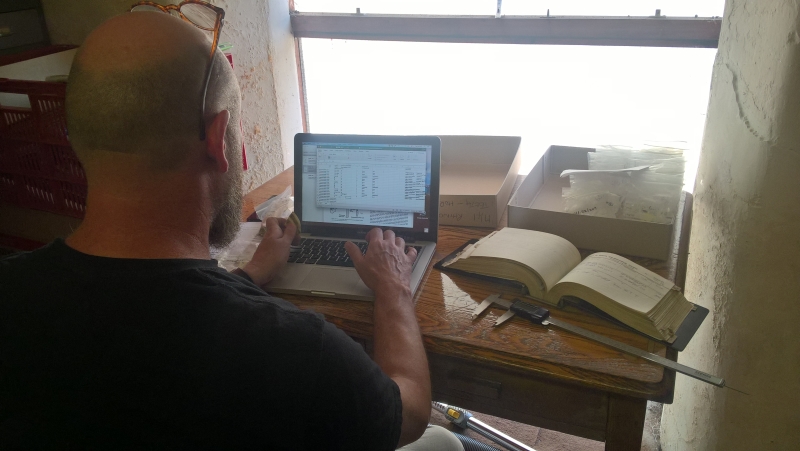 Tim Pearson at work. Tim Pearson at work.
I
am very much indebted to UBSS for allowing me to examine this important
collection, and in particular to Linda Wilson for her help with
the material and for giving up her time to allow me
to have access, even allowing me to take photos on her phone when
my battery ran out! Also my thanks to Allan Summerfield who gave
several hours of his time.
Tim Pearson
|
|
PALAEOECOLOGY OF THE RED FOX IN BRITAIN
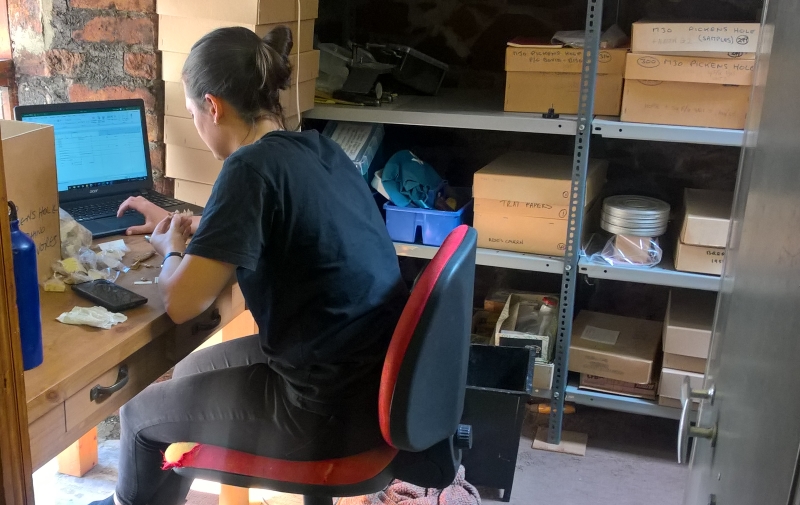
Olivia Lozides at work.
Olivia Lozides, an MSc Quaternary
Science student at Royal Holloway University London recently visited the
UBSS museum for three days as part of her dissertation reconstructing
body mass and dietary changes in red fox (Vulpes vulpes Linaeus 1758) through the Late Quaternary. Olivia talks here about her work.
I am analysing and measuring craniodental material (which brought me to
the UBSS collection), to quantitatively assess changes in dental
morphology, and interpret what this may mean for diet. For example,
larger carnassials and reduced molars may suggest a more flesh-based
diet.
I am also using the anteroposterior length lower carnassial (first
molar) to estimate red fox body mass through this time span. The
predictive model I am using to do this is one developed for canids by
Flower (2016). A study on V. vulpes in Israel found size changes across this time period, (Davis, 1977) but it has not yet been explored in Britain. Canis lupus (wolf)
has been shown to change in size during the Late Quaternary (Flower,
2016), accompanied by dietary shifts (Flower and Schreve, 2014).
Mesopredators like the red foxes are often overlooked in carnivore
analysis, and as an omnivorous, highly flexible species it will be
interesting to see what changes Vulpes vulpes may have undergone in the range of environmental conditions from the last interglacial to the present day.
Olivia Lozides
References
Davis S. (1977), ‘Size variation of the fox, Vulpes vulpes in the palaearctic region today, and in Israel during the Late Quaternary’, Journal of Zoology London, 182: 343:351
Flower L.O.H. (2016), ‘New body mass estimates of British Pleistocene
wolves: Palaeoenvironmental implications and competitive interactions’, Quaternary Science Reviews, 149: 230-147
Flower L.O.H. and Schreve D.C. (2014), ‘An investigation of palaeodietary variability in European Pleistocene canids’, Quaternary Science Reviews, 96: 188-203
|
|
2019 CALENDAR
Don't forget to get these dates in your diary!
21st/22nd September, South Wales leader training weekend for current students in how to lead/second trips.
27th September, University of Bristol Students' Union Welcome Fair
25th-27th October, SUICRO Symposium in Carrick, Co Leitrim including the Irish launch for Caves of Mid-West Ireland.
12th-13th October, Freshers' Weekend at White Walls (or elsewhere).
19th-20th October, Freshers' Weekend at SWCC.
2nd-3rd November, Bonfire Weekend at the Hut.
9th - 10th November, UBSS Centenary Symposium in the School of
Geographical Science. There will be a programme of talks on Saturday 9th
November including the Bristol book launch for Caves of Mid-West
Ireland, the successor to all the society's previous guidebooks to The
Caves of Mid-West Clare, On Sunday there will be various field trips. |
|
|
|
|
|
